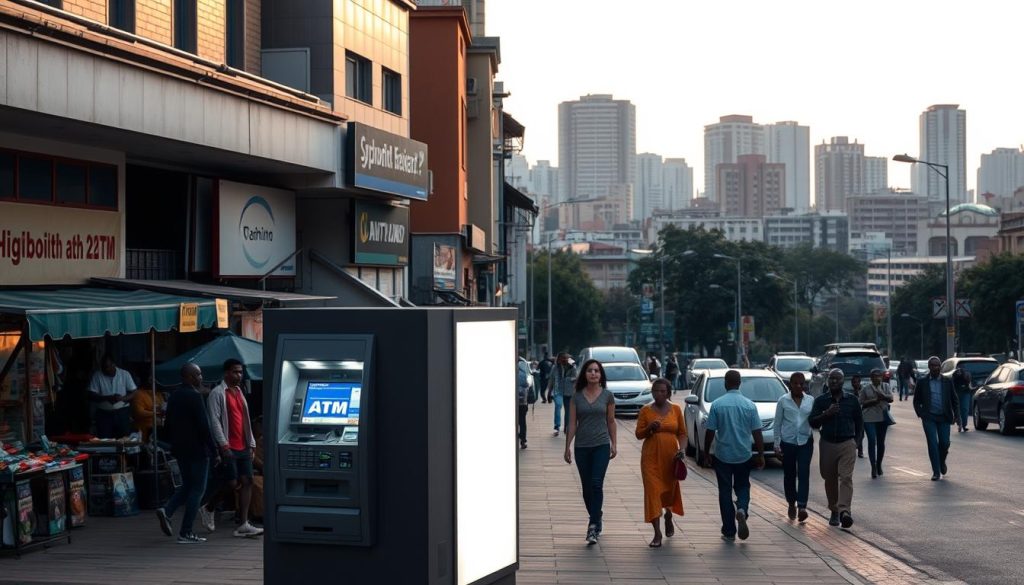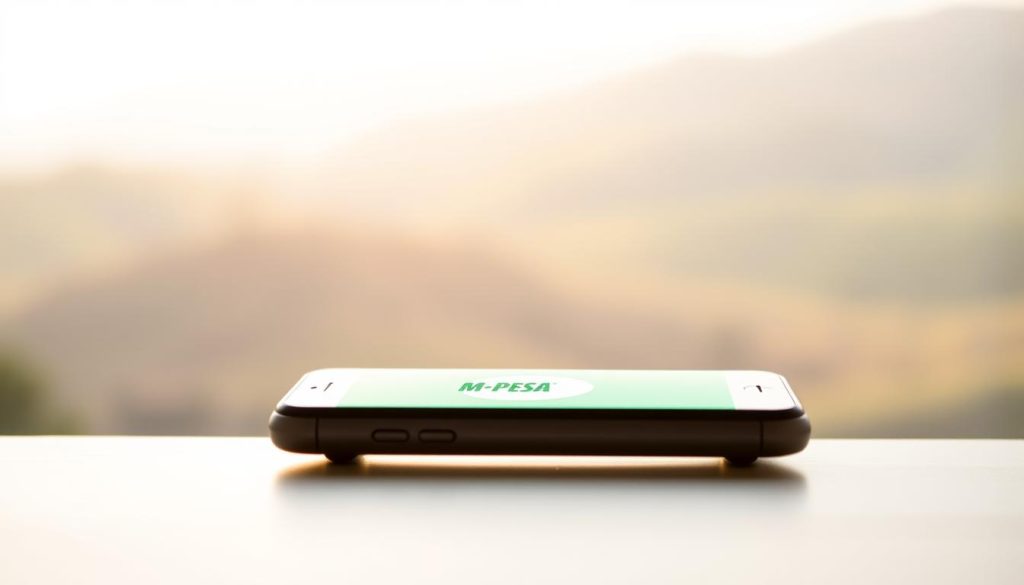Did you know that travelers can save up to 10% on their trip budget by managing their money wisely? When planning your journey, understanding the local currency and payment options is essential. In Kenya, the official currency is the Kenyan shilling (KES), and knowing how to handle it can make your trip smoother and more cost-effective.
Currently, the exchange rate stands at approximately 1 USD = 146 KES. This means every dollar you spend can go further if you plan ahead. Using a debit or credit card with no foreign transaction fees can help you avoid unnecessary charges. Additionally, withdrawing cash from ATMs in local currency often offers better rates than exchanging money at airports or hotels.
Whether you’re exploring bustling cities or serene landscapes, having a mix of cash and card payments ensures flexibility. This guide will help you navigate the local currency, exchange rates, and payment methods to make your trip hassle-free and budget-friendly.
Introduction to Kenya’s Currency Landscape
Navigating the currency landscape can make your journey more enjoyable and cost-effective. Understanding the local money system ensures you’re prepared for every transaction, whether you’re in a bustling city or a serene village.
Understanding the Kenyan Shilling
The Kenyan shilling (KES) is the official currency, often referred to as “bob” by locals. It comes in denominations of coins and notes, making it easy to use for everyday purchases. From street vendors to supermarkets, the shilling is widely accepted across the country.
In major cities like Nairobi, you’ll find that most transactions are conducted in shillings. It’s a good idea to carry smaller denominations for convenience, especially when shopping at local markets or using public transport.
Overview of Accepted Foreign Currencies
While the shilling is the primary currency, some tourist areas, hotels, and lodges accept foreign currencies like the U.S. dollar (USD) and the euro (EUR). However, it’s essential to note that newer currency notes (post-2006 for USD) are preferred for exchanges.
Here’s a quick comparison of where you can exchange your money:
| Location | Pros | Cons |
|---|---|---|
| Banks | Better exchange rates, secure transactions | Longer wait times, limited hours |
| Currency Kiosks | Convenient, faster service | Higher fees, less favorable rates |
Using a mix of cash and card payments is the best way to manage your spending. This approach ensures you’re covered in all situations, from small purchases to larger expenses.
Key Currency Facts and Exchange Rates
Exchange rates play a crucial role in managing your spending abroad. Knowing the current rate for USD to KES helps you budget effectively and avoid unnecessary fees. As of September 2023, 1 USD equals approximately 146 Kenyan shillings. Minor fluctuations in this rate can impact your travel expenses, so staying informed is essential.

USD to KES Conversion Insights
When converting USD to KES, the mid-market rate is your best reference. This is the rate banks and currency services use for transactions. However, the rate you see online might differ from what’s applied at exchange kiosks or banks. Always compare rates before making a transaction to ensure you’re getting a fair deal.
Using a debit card or credit card with no foreign transaction fees can save you money. These cards often offer better rates than cash exchanges. Additionally, withdrawing cash from ATMs in local currency is usually more cost-effective than exchanging money at airports or hotels.
Staying Updated with the Mid-Market Rate
Tracking the mid-market rate is simple with online tools and apps. These platforms provide real-time updates, helping you make informed decisions. Here’s how to stay updated:
- Use currency conversion sites to compare rates.
- Check the mid-market rate before exchanging money.
- Avoid dynamic currency conversion, which often adds extra fees.
By staying informed, you can maximize your spending power and avoid hidden costs. This knowledge also prepares you for managing fees and choosing the best cards for conversions, which we’ll cover in the next sections.
Managing Cash and Card Payments in Kenya
Handling cash and cards wisely ensures a stress-free travel experience. Whether you’re exploring vibrant markets or dining at local restaurants, knowing how to manage your money efficiently is essential. Here’s how to balance cash and card usage for seamless transactions.
Best Practices for Handling Cash
Carrying smaller denominations of the local currency is a smart move. This makes it easier to pay for small purchases like street food or public transport. Always verify prices before handing over your money to avoid misunderstandings.
Keep your cash secure by using a money belt or a hidden pouch. Avoid displaying large amounts in public to minimize the risk of theft. For larger expenses, consider using a card to reduce the need for carrying excessive cash.
Optimizing Card Usage and Avoiding Fees
Using a debit card or credit card with no foreign transaction fees can save you money. Commission-free travel cards like Revolut and N26 are excellent options. They offer competitive exchange rates and minimize hidden fees.
Always make sure to request payments in the local currency (KES) to avoid dynamic currency conversion surcharges. Compare fees from different cards to find the most cost-effective option. Keeping a backup credit card is also a good idea in case a terminal doesn’t accept your debit card.
By following these tips, you can manage your spending effectively and enjoy a hassle-free trip.
Essential Tips for Using ATMs in Kenya
Using ATMs wisely can save you time and money during your travels. In Kenya, ATMs are widely available, but choosing the right one ensures secure and cost-effective transactions. Here’s how to make the most of your ATM withdrawals while staying safe.

Finding Reliable Bank ATMs
Opt for ATMs located inside bank branches, such as Stanbic Bank or KCB. These machines are more secure and often offer better terms than standalone or airport ATMs. Major banks like Equity Bank and Co-operative Bank also provide accessible and reliable options.
Most ATMs in Kenya accept Visa and Mastercard, but cards like American Express or UnionPay may not work. Always check for the logos on the machine before inserting your card.
Preventing ATM Scams and Overcharges
Stay vigilant when using ATMs. Check for suspicious devices attached to the machine, such as card skimmers. Cover the keypad while entering your PIN to protect your money.
If an ATM offers dynamic currency conversion, always choose to withdraw in the local currency (KES). This avoids additional fees and ensures a fair exchange rate.
| ATM Location | Pros | Cons |
|---|---|---|
| Bank Branches | Secure, better rates, reliable | Limited hours, possible queues |
| Airport ATMs | Convenient, 24/7 access | Higher fees, less secure |
By following these tips, you can ensure safe and efficient ATM withdrawals during your trip. Always carry a mix of cash and cards for flexibility, and stay alert to avoid scams.
Navigating Commission-Free Cards for Your Trip
Managing your travel expenses doesn’t have to be complicated with the right tools. Commission-free cards like Revolut, N26, and Wise are designed to save you money and simplify your spending while abroad. These cards eliminate hidden fees and offer transparent exchange rates, making them a smart choice for any trip.
Advantages of Using Revolut and Similar Cards
Revolut is a popular choice for travelers due to its low fees and user-friendly features. With Revolut, you can create virtual cards instantly, track your spending in real-time, and manage multiple currencies in one app. This makes it easy to stay on top of your money while traveling.
Other benefits include:
- No foreign transaction fees for international purchases.
- Instant notifications for every payment or withdrawal.
- Competitive exchange rates close to the mid-market rate.
Comparing Other Card Options like N26 and Wise
N26 and Wise are also excellent alternatives. N26 offers three free ATM withdrawals per month in euros, while Wise allows you to load up to 54 currencies onto its card. Both options are designed to minimize fees and maximize convenience.
Here’s a quick comparison:
| Card | Key Features | Fees |
|---|---|---|
| Revolut | Multi-currency balances, virtual cards | Low or no foreign transaction fees |
| N26 | Free ATM withdrawals in euros | 1.7% fee outside Europe |
| Wise | 54 currencies, transparent rates | Industry-low commission |
By choosing the right card, you can avoid unnecessary fees and make the most of your travel budget. Whether you prefer Revolut, N26, or Wise, these tools ensure a hassle-free payment experience.
Embracing Local Payment Solutions with M-PESA
M-PESA has transformed how locals and visitors handle everyday payments in Kenya. This mobile money system is widely used for everything from buying groceries to paying for transportation. By adopting M-PESA, you can streamline your spending and avoid relying solely on cards or cash.

How to Set Up Your M-PESA Account
Setting up an M-PESA account is quick and easy. First, purchase a local SIM card or eSIM from a provider like Safaricom. Once your SIM is activated, dial *234# to register for M-PESA. You’ll need to provide your ID and create a PIN for security.
After registration, deposit money into your account. You can do this at a bank ATM or through authorized M-PESA agents. Look for verified outlets to ensure a smooth transaction. Remember, the maximum account balance is Ksh 100,000 (about $970).
Using M-PESA for Daily Transactions
M-PESA is accepted at many locations, including bars, restaurants, and taxis. To make a payment, simply enter the recipient’s phone number and the amount. Confirm the transaction with your PIN. It’s a convenient way to handle small expenses without carrying large amounts of cash.
For tips or minor purchases, M-PESA is especially useful. It eliminates the need for exact change and ensures your money is secure. Plus, you can track all transactions through the M-PESA app, making it easier to manage your spending.
“M-PESA has revolutionized financial inclusion, offering a simple and efficient way to manage money.”
By embracing M-PESA, you’ll enjoy a hassle-free travel experience while supporting local businesses. It’s a win-win for both convenience and community.
Kenya: Ultimate Travelers Guide to Currencies & Payments
Smart money management is key to making the most of your trip. Understanding how to handle local currency, use cards efficiently, and avoid unnecessary fees ensures a smooth and enjoyable experience. This guide equips you with the knowledge to navigate payments confidently, whether you’re dining at a local restaurant or exploring bustling markets.
Key Takeaways for Seamless Payments
Here’s a quick recap of the essential tips covered in this guide:
- Carry a mix of cash and cards for flexibility. Smaller denominations of the kenyan shilling are handy for daily expenses.
- Use cards with no foreign transaction fees to save on conversions. Options like Revolut and Wise offer competitive rates.
- Always check the mid-market rate before exchanging money to avoid hidden costs.
- Opt for secure ATMs inside bank branches to minimize risks and fees.
By following these tips, you can manage your spending effectively and avoid common pitfalls. Whether you’re withdrawing cash or making a payment with your card, staying informed ensures a hassle-free trip.
| Payment Method | Pros | Cons |
|---|---|---|
| Cash | Widely accepted, no fees for small purchases | Risk of theft, need for exact change |
| Cards | Secure, no need to carry large amounts | Possible foreign transaction fees |
| Mobile Money (M-PESA) | Convenient, widely used locally | Requires local SIM card setup |
With these strategies, you’ll be well-prepared to handle your travel finances efficiently. Review this guide before your trip to keep your money secure and your journey stress-free.
Understanding Exchange Practices at Airports and Banks
Exchanging money at airports might seem convenient, but it often comes with hidden costs. Airport kiosks typically offer less competitive rates and higher fees, making them a less favorable option for travelers. To save money and get the best value, it’s essential to understand where and how to exchange your currency.

Avoiding Poor Exchange Rates at Airports
Airport exchange services are known for their captive audience, which allows them to charge higher fees. The rates you’ll find here are often far from the mid-market rate, meaning you’ll lose more money in the process. Always compare rates before making a transaction to ensure you’re getting a fair deal.
Instead of exchanging currency at the airport, consider withdrawing cash from a local ATM or using a card with no foreign transaction fees. These options often provide better rates and save you from unnecessary fees.
Choosing Banks Over Bureau de Change
Banks like Barclays, Standard Chartered, and KCB offer more reliable and standardized exchange services. They provide better rates compared to bureau de change, which often add extra charges. Using a bank ensures a secure transaction and minimizes the risk of hidden costs.
When exchanging money, always request payment in the local currency and decline dynamic currency conversion options. This helps you avoid additional fees and ensures you’re getting the best possible rate.
| Option | Pros | Cons |
|---|---|---|
| Banks | Better rates, secure transactions | Limited hours, possible queues |
| Bureau de Change | Convenient, faster service | Higher fees, less favorable rates |
By planning ahead and choosing the right place to exchange your currency, you can save money and make the most of your travel budget. Avoid last-minute exchanges and always compare rates to ensure a smooth and cost-effective experience.
Practical Budgeting and Currency Use During Your Trip
Planning your daily expenses wisely can make your trip more enjoyable and stress-free. Knowing how to manage your money ensures you stay within budget while exploring new places. Here’s how to plan your spending and choose the right payment methods for different situations.
Planning Your Daily Expenditures
Start by estimating your daily costs, including transport, meals, and accommodation. For example, local meals and public transport are affordable, while upscale restaurants and hotels may require a larger budget. Keeping track of your spending helps you avoid overspending.
Use a card with no foreign transaction fees for larger purchases. This saves you from unnecessary charges. For smaller expenses, carry cash in smaller denominations. This makes it easier to pay for things like street food or tips.
Payment Options in Restaurants, Hotels, and More
In most restaurants and hotels, you can use a card or cash. However, some places may prefer one over the other. Always ask before ordering to avoid surprises. For example, smaller eateries and markets often prefer cash.
Here’s a quick guide to help you decide:
- Use a card for larger payments at hotels or upscale restaurants.
- Carry cash for small purchases, tips, and local markets.
- Check for hidden fees when using a card abroad.
By balancing cash and card usage, you can handle any payment situation with ease. This approach ensures you’re prepared for both planned and unexpected expenses.
Conclusion
Planning your finances wisely ensures a smooth and enjoyable travel experience. This guide has equipped you with essential tips to handle the local currency, use cards efficiently, and avoid unnecessary fees. From understanding the kenyan shilling to embracing mobile payment solutions like M-PESA, you’re now prepared to manage your money confidently.
Remember to carry a mix of cash and cards for flexibility. Use debit cards with no foreign transaction fees to save on conversions. Always check the mid-market rate before exchanging currency to avoid hidden costs. Secure ATM withdrawals from trusted banks ensure safety and better rates.
By applying these strategies, you can make the most of your travel budget and enjoy a hassle-free trip. Stay informed, plan ahead, and choose the right payment methods to enhance your journey. Safe travels!
The above is subject to change.
Check back often to TRAVEL.COM for the latest travel tips and deals.
Here are some Tours & Sightseeing suggestions that might pique your interests!






